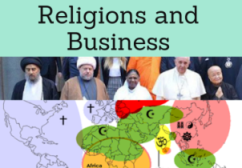Common Market Eastern Southern Africa COMESA
COMESA Free Trade Area, Customs Union (Common Market Eastern Southern Africa)

The objective of COMESA is to develop a Free Trade Area removing all internal trade tariffs and barriers.
COMESA members economies are Burundi, Comoros, Democratic Republic of the Congo, Djibouti, Egypt, Eritrea, Eswatini, Ethiopia, Kenya, Libya, Madagascar, Malawi, Mauritius, Rwanda, Seychelles, Somalia, Sudan, Tunisia, Uganda, Zambia, and Zimbabwe.
South Sudan, has requested access to the Common Market Eastern Southern Africa (COMESA).
COMESA: 50% of FDI inflows in Africa.

- Introduction to the Common Market Eastern Southern Africa (COMESA)
- History of COMESA
- COMESA strategy
- COMESA Countries: Burundi, the Comoros, the DR Congo, Djibouti, Egypt, Eritrea, Eswatini, Ethiopia, Kenya, Libya, Madagascar, Malawi, Mauritius, Rwanda, the Seychelles, Sudan, Uganda, Zambia, and Zimbabwe
- COMESA Integration Process
- Preferential Trade Area
- Free Trade Area
- Customs Union
- Common Market
- COMESA Economic Community
- COMESA Common Investment Area (Investment Agreement)
- COMESA Aid for Trade Strategy. Trade Promotion
- Monetary Cooperation in COMESA Region
- Infrastructure in COMESA region.
- Transport Corridors
- Economy of COMESA Region
- International Trade
- FDI trends
- Trade Agreements:
- COMESA Institutions
- Leather and Leather Products Institute (LLPI)
- Regional Investment Agency
- COMSTAT Data Portal
- African Trade Insurance Agency
- Alliance for Commodity Trade in Eastern and Southern Africa
- Federation of National Associations of Women in Business in Eastern and Southern Africa
- Eastern and Southern African Trade and Development Bank
- Case Study: Investing in textile, oilseeds, and leather sector
- Doing Business in COMESA countries
Sample - Common Market for Eastern and Southern Africa (COMESA)


Religions and Global Business -
Religious diversity
The educational aims of the Subject “Common Market for Eastern and Southern Africa (COMESA)” are:
- To understand the purposes, functions, and institutions of COMESA
- To learn about economy of COMESA region
- To analyze the steps of COMESA integration process: Free Trade Area, customs union, common market and economic community
- To evaluate the benefits for COMESA member countries
- To learn about COMESA Trade Facilitation and transport programs
- To analyze the role of affiliated institutions: PTA Bank, COMESA Reinsurance Company, ACA
- To learn about the Nile Basin Initiative, Indian Ocean Commission and Economic Community of the Great Lakes Region

The Subject “Common Market for Eastern and Southern Africa (COMESA)” is included within the curriculum of the following academic programs at EENI Global Business School:
Doctorate in African Business.

Master in Business in Africa, International Business.

Courses: Business in Central Africa, East Africa, Southern Africa.


Languages:  or
or  COMESA
COMESA  COMESA
COMESA  COMESA.
COMESA.
- Subject Credits “Common Market for Eastern and Southern Africa (COMESA)”: 2


COMESA strategy is “economic welfare through regional integration in the Southern African region.”
- These countries are predominantly Christians
- Muslim Countries are the Comoros, Djibouti, Egypt, Somalia, and Sudan
- The population of COMESA Markets: 406 million inhabitants
- Former members of the Common Market Eastern Southern Africa (COMESA): Lesotho (1997), Mozambique (1997), Tanzania (2000), Namibia (2004), and Angola (2007)
COMESA Free Trade Area was achieved in 2000 when nine of COMESA member economies (Djibouti, Kenya, Madagascar, Malawi, Mauritius, Sudan, Zambia, and Zimbabwe) eliminated their Tariffs on originating products from Eastern and Southern African Countries.
Sample:
This followed an Foreign Trade liberalization programme that started in 1984 on reduction (and eventual elimination) of tariff and non-tariff trade barriers in COMESA region.
Burundi and Rwanda joined COMESA Free Trade Area in 2004.
These eleven economies of COMESA Free Trade Area have not only eliminated customs tariffs but are working on eventual quantitative Restrictions and other Technical Barriers to Trade (TBT) elimination.
Other objectives related to COMESA trade promotion are:
- Regional Trade liberalization and customs cooperation
- Improving transport and communications administration to facilitate the movement of products, services, and people between the economies in COMESA region
- Macroeconomics and monetary policies coordination
The Common Market for Eastern and Southern Africa (COMESA) plans to become a Customs Union.
The Common Market for Eastern and Southern Africa belongs to African Civilization:
The Eastern and Southern African Trade and Development Bank was founded in 1985 following the dispositions of the Treaty of 1981 establishing the Preferential Trade Area, which has since been transformed into the Common Market for Eastern and Southern African States (COMESA), as a financial arm of the integration agreement.

Trans-African Transport Corridors in COMESA region:
- Northern Logistics Corridor
- Lobito Logistics Corridor
- Tripoli-Windhoek
- Cairo-Gaborone
- Beira-Lobito
- North-South Logistics Corridor
- Lagos-Mombasa
- Asia-Africa Logistics Corridor
The largest ports in COMESA region are:
(c) EENI Global Business School (1995-2025)
Top of this page









 WhatsApp
WhatsApp